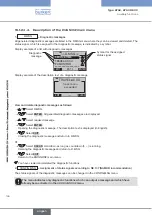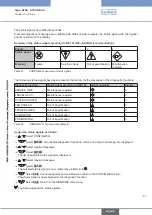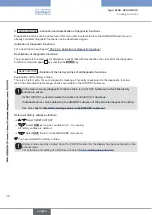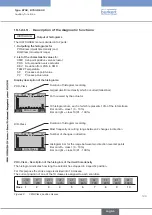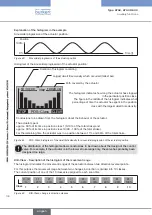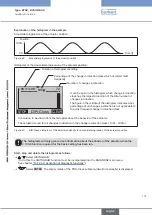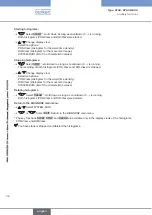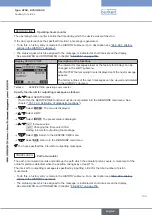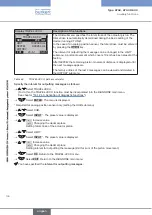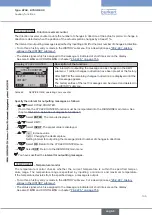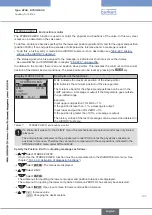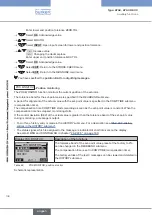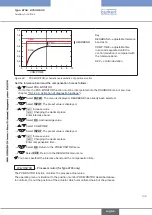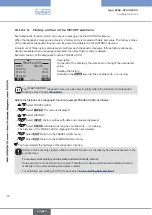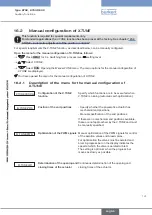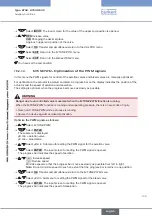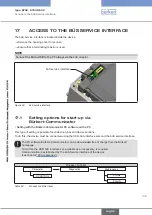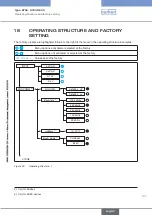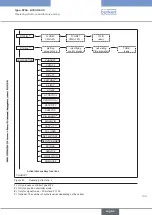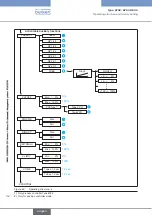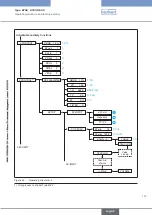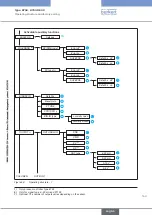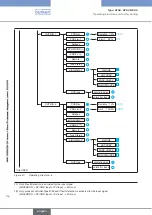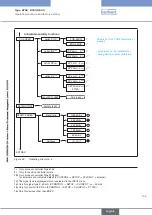
140
Auxiliary functions
Type 8792, 8793 REV.2
16.1.24.6. History entries in the
HISTORY
submenu
Each diagnostic function, which can output a message, has the
HISTORY
submenu.
When the diagnostic message is actuated, a history entry is created with date and value. The history entries
of the respective diagnostic function can be viewed and deleted in the
HISTORY
submenu.
A maximum of three history entries are stored from each diagnostic message. If three history entries are
already available when a message is actuated, the oldest history entry is deleted.
Example: History of the diagnostic function
TRAVEL.ACCU
EXIT
CLEAR
–––
TRAVEL.ACCU
01.02.12
01.02.12
01.02.12
5 cm
35 cm
10 cm
DATE
VALUE
Description:
On the left of the display is the date and on the right the associated
value.
Deleting the history:
Hold down the
CLEAR
key until the countdown (5...) is running.
The
RESET.HISTORY
diagnostic menu can be used to jointly delete the histories of all diagnostic
functions. See chapter “26.2.22.5”.
Delete the histories of a diagnostic function (example TRAVEL.ACCU) as follows:
→
/ Select
TRAVEL.ACCU
.
→
Select
ENTER
. The menu is displayed.
→
/ Select
HISTORY
.
→
Select
INPUT
. History entries with date and value are displayed.
→
Select
CLEAR
. Hold down as long as countdown (5 ...) is running.
The histories of the
TRAVEL.ACCU
diagnostic function are deleted.
→
Select
EXIT
. Return to the
TRAVEL.ACCU
menu.
→
Select
EXIT
. Return to the
DIAGNOSE
main menu.
You have deleted the histories of the diagnostic function.
History entries are only created when the
CLOCK
function for the display has been activated on the
process level.
To receive correct history entries, date and time must be correct.
Date and time must be reset after a restart. Therefore, the device switches immediately and auto-
matically to the corresponding menu after a restart.
For activation and setting of
CLOCK
see chapter “17.4.1. Setting date and time:”
english
Summary of Contents for 8792
Page 196: ...www burkert com ...

